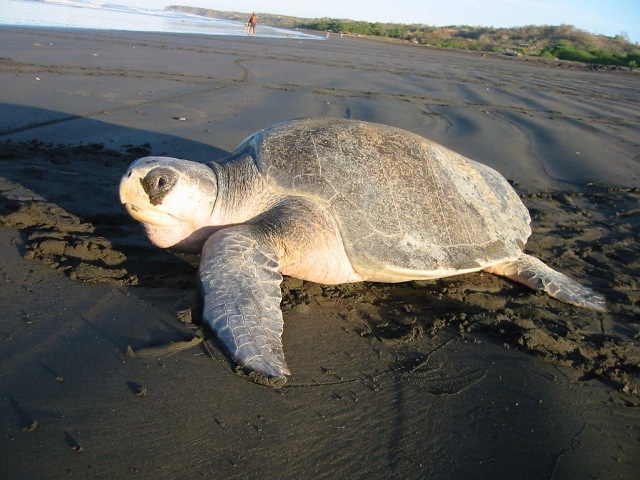Olive Ridley turtles' nesting faces sea erosion risk in Odisha

- Country:
- India
A massive sea erosion near the confluence of Rushikulya River and Bay of Bengal in Odisha's Ganjam district has posed a threat to the mass nesting of the Olive Ridley turtles this year, wildlife activists said.
A six-km stretch from Puruna Bandha to Bateshwar near the river mouth was considered as the second largest mass nesting site after Gahirmatha in Kendrapara district in the state where lakhs of the endangered marine turtles nest between November and February every year.
The state forest department expressed hope that natural restoration will take place in the affected beach in the coming months and there will be no negative impact on the mass nesting of the turtles.
The place of the confluence has changed due to massive sea erosion. While Rushikulya earlier used to meet the sea at Puruna Bandha area, the new location is New Podampeta, around 2.5-km away.
More erosion occurred when the high tidal waves lashed on the beach on Wednesday due to the full moon, said Rabindranath Sahu, secretary of the Rushikulya Sea Turtle Protection Committee.
''At present, very limited space is left on the beach for mass nesting. The sea is destroying the site,'' Sahu said.
PK Mohanty, professor of Marine Science at Berhampur University, also expressed fear that a decrease in the space of the rookery, coupled with sea pollution, would affect the mass nesting.
Berhampur Divisional Forest Officer (DFO) Amlan Nayak confirmed the change of location of the river mouth and erosion of the beach in the mass nesting site.
He, however, hoped that the beach might be redeveloped naturally in the coming months after withdrawal of the rain and it would facilitate the mass nesting of Olive Ridley turtles.
About three years ago, a similar erosion had occurred at the beach, but natural restoration took place through deposition by the sea, an official said.
Sahu said sea erosion in the river mouth area had been taking place since 2007. However, natural restoration did not happen near Gokharkuda and Purana Bandha areas -- a stretch of the rookery.
During 'arribada', female turtles reach beaches usually at the dead of the night for laying eggs. After that, they return to the sea.
An Olive Ridley usually lays about 120 to 150 eggs, and hatchlings, after emerging from these eggs in a span of 45 to 60 days, travel to the sea. They grow up without their mothers.
Reports suggest that out of every 1,000 hatchlings that enter the sea, only one manages to reach adulthood. This extremely low rate of survival has put them under the International Union for Conservation of Nature's red list, according to Odisha Tourism.
(This story has not been edited by Devdiscourse staff and is auto-generated from a syndicated feed.)
- READ MORE ON:
- Gokharkuda
- International Union for Conservation of Nature's
- Olive Ridley
- Rushikulya Sea Turtle Protection Committee
- Berhampur University
- Marine Science
- river mouth area
- Purana
- Amlan Nayak
- Rushikulya River
- Rabindranath Sahu
- Puruna Bandha to Bateshwar
- Gahirmatha
- Rushikulya
- Puruna Bandha
- Odisha Tourism
- moon
- Sahu
- Ganjam district
- New Podampeta
ALSO READ
Rebel Moon - Part 2: The Scargiver: What to Expect
Science News Roundup: White House directs NASA to create time standard for the moon; Gene involved in cell shape offers clues on left-handedness
Science News Roundup: White House directs NASA to create time standard for the moon; Wide swath of US will get buggy as two cicada broods intrude and more
Science News Roundup: White House directs NASA to create time standard for the moon; Wide swath of US will get buggy as two cicada broods intrude and more
NASA selects companies to develop lunar terrain vehicle for Artemis Moon missions










